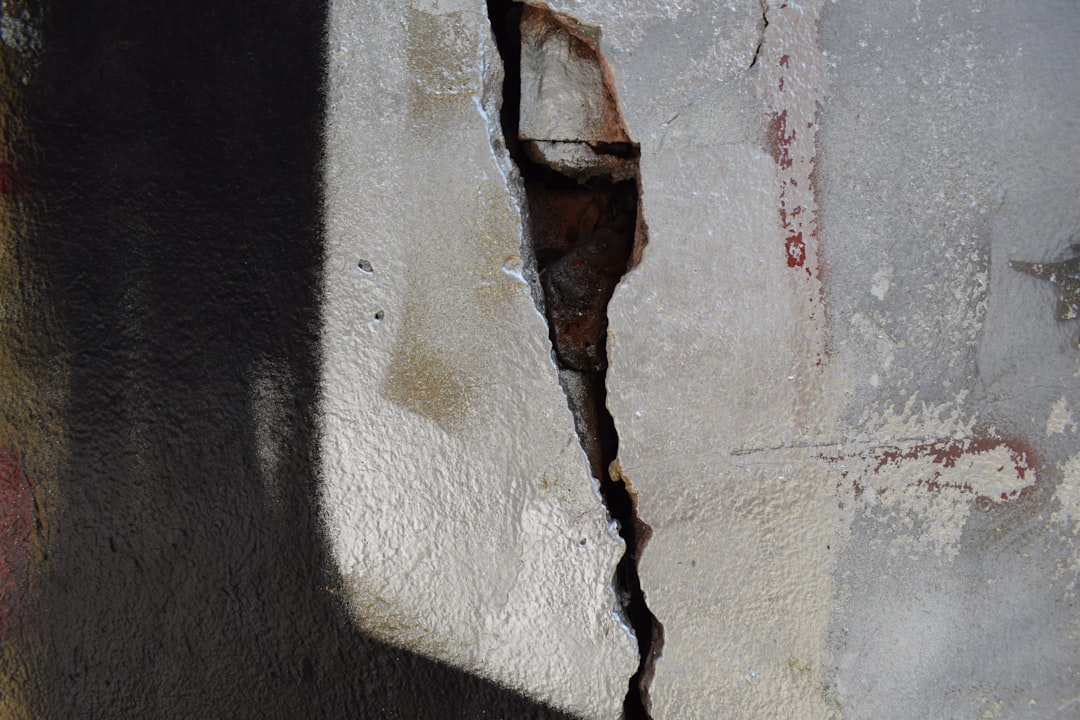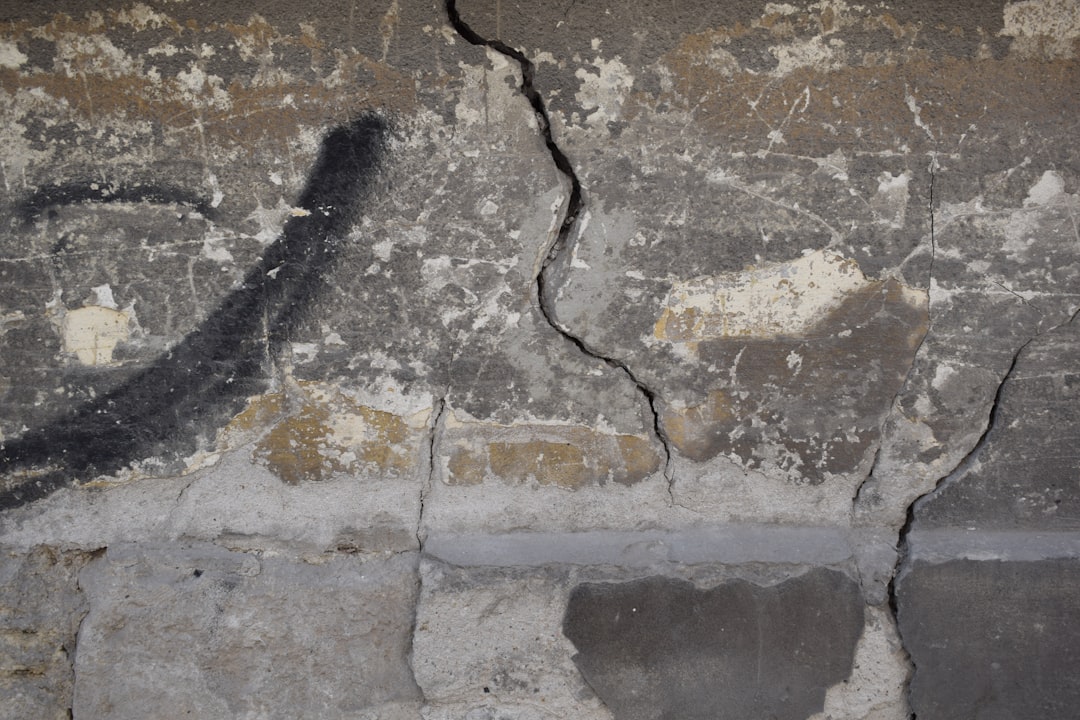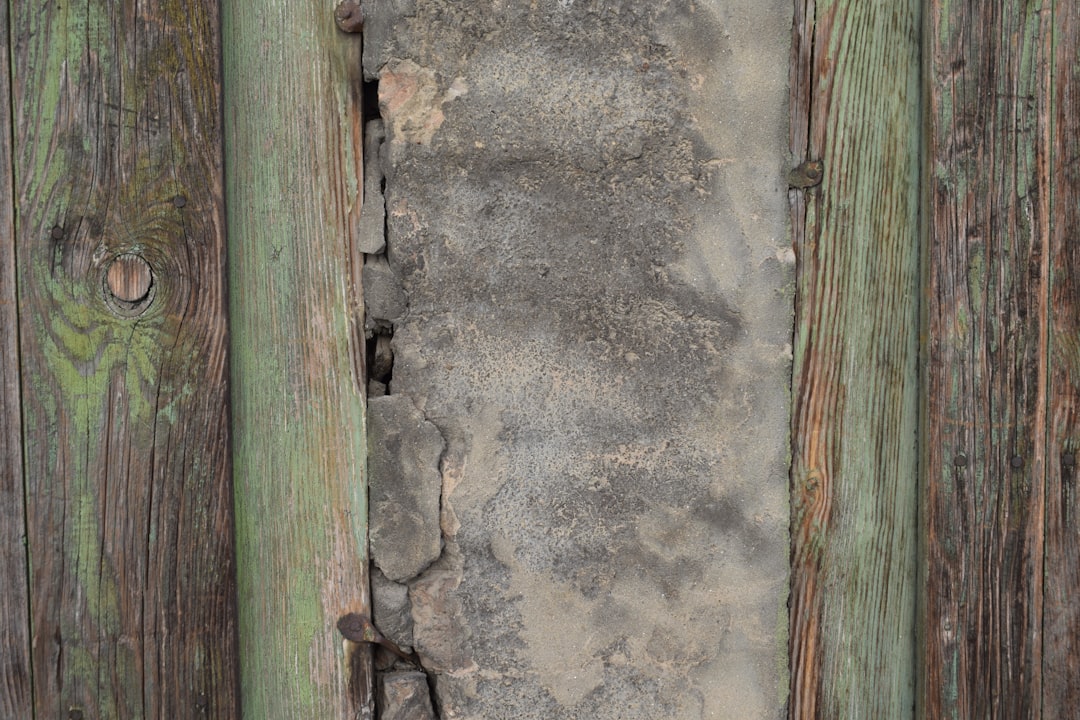

Engage prospects with a scan and streamline customer engagement with FREE QR code marketing tools by Sona – no strings attached!
Create a Free QR CodeFree consultation

No commitment

Engage prospects with a scan and streamline customer engagement with FREE QR code marketing tools by Sona – no strings attached!
Create a Free QR CodeFree consultation

No commitment
Termite damage is a persistent, high-impact issue posing ongoing challenges for property owners, managers, and service providers. Missed inspections, slow repair bookings, and late responses often result in escalating structural damage, higher costs, and gaps in insurance coverage for companies. Traditional lead capture methods, such as relying on potential customers to fill out forms or make calls, often leave high-value prospects untracked and urgent needs unaddressed.
Digitization has pushed QR codes to the forefront as a strategic solution for linking offline moments to digital action. For termite damage repair providers, QR codes in marketing enable real-time engagement at key touchpoints, offering immediate options for inspection scheduling, quick quote requests, and access to time-sensitive education. This reduces delays and closes gaps left by impersonal or manual processes.
Integrating QR code technology at every phase of the customer journey gives companies much-needed visibility into anonymous interest, lets them act on purchase signals faster than competing repair businesses, and empowers property owners with clear, actionable next steps. This guide outlines practical use cases and proven strategies to address common pain points in termite damage repair, using QR code applications that eliminate friction, support data-driven follow-up, and unlock measurable growth.

Termite repair firms frequently miss out on high-value prospects simply because early-stage interest goes untracked, whether from flyers, signage, or in-person visits. Prospective customers often investigate without filling out forms, leading to lost opportunities that never reach the CRM. QR codes bridge this gap by transforming every offline touchpoint, such as direct mail, door hangers, or invoices, into a dynamic lead capture mechanism that instantly connects interested owners with booking portals or information, streamlining the journey from awareness to conversion.
When deployed correctly, QR campaigns turn static materials into two-way conversations. Instead of hoping someone will call a phone number or type a long URL, a single scan triggers the right action within seconds. That immediacy is critical in termite scenarios where damage spreads silently and urgency increases quickly. It also enables you to benchmark time-to-response, which correlates directly with win rates and repair volume.
Automated QR solutions support rapid data capture and granular tracking, ensuring you never overlook anonymous but highly interested visitors. Use a centralized platform like Sona QR to standardize code creation, connect every scan to your CRM, and unify reporting across all printed assets and environments.

Many termite damage leads are missed because property owners, having seen a damage sign, flyer, or service truck, do not act right away or are left uncertain about the next step. Without a simple, immediate way to capture their intent, these opportunities either fade or are picked up by faster-moving competitors. QR codes solve this by creating frictionless bridges from offline moments of intent to online action, increasing the proportion of leads that hit your pipeline while providing actionable data for timely follow-up.
In termite damage repair, the stakes of delay are high. A homeowner noticing droppings, hollow-sounding wood, or blistering paint might tuck your flyer into a drawer and forget it for weeks. A property manager who sees your yard sign may plan to call later, then get sidetracked. A QR code transforms that fleeting attention into instant action, reducing the chance of decay in interest and giving your team a timestamped signal of urgency.
Key use cases include:
Crucially, dynamic QR codes let you adapt campaigns as market needs shift. You can update destinations, swap calls to action, and localize promotions without reprinting, which keeps outreach relevant and removes the risk of missing out on time-sensitive prospects.
Termite repair firms have long struggled to tie specific outreach efforts, like mailers or signage, to actual revenue, often due to lack of visibility into which assets work and which do not. QR code formats bridge this data gap by generating a unique digital footprint for every scan, capturing both intent and source that informs future campaigns.
Choosing the right QR format depends on the action you want. In termite repair, most conversions hinge on scheduling, inquiry, evidence submission, or retention tasks like warranty registration. Matching the format and destination to that action reduces friction and increases completion rates.
Dynamic, editable QR destinations mean your team can adapt messaging as needed, eliminating costly reprints and ensuring campaigns stay aligned with evolving seasonal risks or service areas. Use static codes sparingly for permanent assets like business cards, and opt for dynamic codes for anything you plan to measure or optimize.

Growth in termite damage repair has been stalled for many by the inability to track anonymous interest or retarget homeowners who show subtle engagement signals. By placing QR codes wherever high-intent offline interaction occurs, companies can capture previously invisible leads and nurture them while their needs are most acute.
High-impact placements exist throughout a typical service area. Every truck, sign, and document can be made interactive. Once instrumented with QR, these everyday objects create a steady flow of scan data and lead opportunities that were previously unmeasured.
The result is a continuously growing, better-qualified pipeline and better resource allocation as you learn where your highest-quality leads originate. With consistent deployment and testing, your team can build a map of neighborhood-level intent that guides routing, staffing, and seasonal campaigns.

QR-enabled workflows are most effective when they reflect real customer behavior. Property owners want clarity and speed, and technicians want tidy handoffs between field and office teams. The following use cases turn common interactions into measurable outcomes.
Start by mapping your core moments of truth. For termite repair firms, these often include first discovery, urgent consultation, inspection follow-up, and post-repair education. Attach a QR-driven action to each moment to simplify the journey and close the loop in your CRM.
These three use cases cover the most frequent entry points into your business and ensure that every physical asset has a digital next step. With dynamic QR codes, you can A/B test calls to action, adjust routes based on the season, and personalize content by geography.
Many termite repair providers struggle to build actionable, segmented audiences in their CRM because early engagement signals are missed or anonymous. With every QR code scan, you capture rich context and intent data that converts anonymous interest into known, segmented audiences that your team can nurture.
Segmentation works best when you align scans to the buyer journey. An awareness-stage scan from a neighborhood flyer signals different intent than a conversion-stage scan from an inspection sticker on a previously serviced property. Treat them accordingly in your messaging, and your conversion rates will climb.
With such intelligence, termite services can allocate resources to the right leads and reduce the risk of letting high-intent inquiries stall or slip away. Platforms like Sona QR make it simple to auto-tag scans by location, asset, and CTA, then sync those tags with HubSpot, Salesforce, or Meta audiences for immediate remarketing.
Traditional marketing for termite repair often underdelivers due to the inability to connect touchpoints and report which channels truly drive new business. QR codes eliminate these blind spots, providing a full picture of where and how engagement starts—see offline attribution for measurement strategies across print and field channels.
Effective integration relies on consistency of message and destination. Whether someone scans a code on a truck wrap or a workshop handout, the landing experience should be familiar, fast-loading, and designed to convert. With a central platform, you can standardize destinations, enforce UTM tagging, and measure performance across channels.
This integrated, data-driven approach breaks down silos, making every offline and online touchpoint measurable and actionable. When paired with Sona QR, you can manage all your codes, monitor performance in a single dashboard, and auto-sync scan activity with your CRM to trigger the right follow-up every time.
A structured approach ensures you deploy QR codes with purpose, not as an afterthought. The following checklist helps you move from idea to impact while maintaining scannability, data quality, and consistent user experience.
Before you begin, select one or two high-leverage use cases, such as inspection booking from door hangers and review collection from invoices. Launch small, measure outcomes, and scale the campaigns that demonstrate the strongest scan-to-book conversion.
Set a specific objective and define what success looks like. For example, target 30 on-the-spot inspection bookings from a homeowners association workshop or 100 virtual assessment submissions from a postcard drop in a high-risk neighborhood.
Choose static or dynamic codes based on the need for tracking, optimization, and editing. In termite repair, dynamic codes are recommended for any campaign you want to measure or change without reprinting.
Ensure your QR codes are scannable in real-world conditions and recognizable as actionable elements. Visual design should direct the eye to the code and the benefit-focused CTA.
Put codes where they will be seen and used. Consider height, distance, motion, and dwell time. A code on a moving truck needs larger sizing and fewer form fields than a code on a countertop or door hanger.
Launch with tracking in place, then iterate quickly based on the data. Treat every code as a mini experiment and double down on what works.

Termite repair businesses often face challenges in proving ROI, especially for campaigns that span multiple touchpoints. QR analytics make it possible to attribute every scan, conversion, and closed deal back to its source, revealing which efforts move leads from anonymous interest to real revenue.
Start with a data foundation. Standardize how you name codes, tag assets, and structure UTM parameters. Then connect your QR platform to your CRM so each scan becomes a trackable event in the customer record. With this setup, you can build dashboards that tie specific placements to booked inspections, sold repairs, and downstream upsells.
Platforms like Sona QR and Sona.com streamline this workflow. Sona QR tracks scans and engagement, while Sona.com connects those interactions to pipeline and revenue through identity resolution and multi-touch attribution. The result is a clear view from first scan to final invoice.
QR code success compounds when you operationalize the basics and add a few creative twists. The best programs combine rigorous measurement with field-friendly deployment that feels natural during service calls and neighborhood outreach.
Treat every printed surface as a potential scan moment, but avoid clutter. One clear promise per code works better than a wall of choices. Pair that discipline with automation, and you will see faster responses, more scheduled inspections, and better review capture after each job.
These tactics maximize every opportunity to surface and convert valuable leads while closing persistent gaps in traditional workflows. With Sona QR, you can build templates for recurring assets like invoices and mailers, then replicate successful layouts at scale.
Real-world outcomes demonstrate how QR codes convert passive curiosity into booked inspections and paid work. The common thread is strategic placement combined with a compelling promise and a low-friction landing page.
Borrow ideas from neighboring home services too. Strategies that work for plumbing or roofing often translate well to termite repair when you adjust for urgency and education needs unique to wood-destroying insects.
Consider adding a referral loop. A QR on a refrigerator magnet that reads "Refer a neighbor, get a discount" can trigger a referral form and track the original customer as the source, which compounds growth through word of mouth while keeping attribution intact.
The difference between a novelty QR and a revenue-driving QR is alignment. The code, the promise, and the landing experience must all support a single, valuable action that matches the user’s context.
Avoid common traps by designing for real-world conditions. Codes on trucks need large formats and minimal form fields. Codes on invoices can ask for more detail because the customer is seated and focused. Test and refine to fit each environment.
A few small process changes prevent most pitfalls. Standardize your QR templates, use a short list of approved CTAs, and make QA scans part of your pre-deployment checklist. Over time, you will build a reliable playbook for each media type.
QR codes have fundamentally changed how termite damage repair services overcome longstanding barriers, such as late lead capture, unseen customer intent, and fragmented offline-to-online journeys. Through real-time engagement, automated information flow, and precise data collection, companies of all sizes can move leads from uncertain interest to scheduled repair and post-service upsell. Immediate, actionable intelligence generated at every scan ensures improved conversions and faster response times, and it allows for ongoing optimization of resources and outreach.
Scanning is more than a tech flourish. It is a core capability that delivers concrete returns, seamless customer journeys, and defensible marketing ROI. Repair providers who make the most of QR-driven opportunities stand to lead in service excellence, customer growth, and long-term business sustainability. With Sona QR, you can Start creating QR codes for free, track performance, and connect scan activity to your CRM. With Sona.com, you can attribute those scans to pipeline and revenue for a complete view of impact.
Modern QR code strategies give termite damage repair firms new leverage in capturing high-value leads, acting on urgent customer needs before competitors, and turning once-anonymous interest into measurable growth. Each step, from the first touchpoint to real-time analytics, addresses historic blind spots such as untracked prospects, slow outreach, and unclear campaign ROI. By making QR adoption a core component of your customer engagement and marketing mix, repair companies will close operational gaps and build smarter, more resilient businesses ready for the digital era.
QR codes have transformed termite damage repair services from traditional, paper-heavy processes into dynamic, data-driven customer engagement channels. Whether it’s streamlining service access, educating homeowners, or tracking inspection follow-ups, QR codes replace manual steps with instant, mobile-friendly actions that enhance customer experience and operational efficiency. Imagine providing clients with immediate access to repair histories, maintenance tips, and scheduling—all through a simple scan.
With Sona QR, you can create dynamic, trackable QR codes in seconds, update service information without reprinting materials, and connect every scan to actionable insights that improve customer retention and generate new leads. No more missed opportunities or outdated information—just smarter, more effective termite damage repair services. Start for free with Sona QR today and turn every scan into a satisfied customer and a growing business.
Signs include termite droppings, hollow-sounding wood, and blistering paint.
You can prevent infestation by accessing preventive maintenance guides and taking informed steps linked via QR codes on maintenance handouts.
The process involves quick inspection scheduling, virtual damage assessments if needed, timely repairs, and post-service education, all streamlined through QR code interactions.
The article does not specify exact costs but suggests QR codes can provide quick quotes and estimates to help understand repair expenses.
Using QR codes on yard signs, mailers, and service vehicles can connect you instantly to local termite damage repair providers for inspection and service.
QR codes enable real-time engagement, instant booking, quick quote requests, and educational access, reducing delays and improving lead capture and customer follow-up.
Effective placements include yard signs, direct mail, service trucks, invoices, door hangers, event materials, and inspection stickers.
Types include web link codes for booking and guides, form submission codes for requests, vCards for contact sharing, and codes triggering app downloads or SMS/email actions.
By using dynamic QR codes linked to CRM systems, companies can track every scan, attribute revenue, analyze campaign performance by region and media, and optimize outreach.
Avoid misaligned CTAs, poor environmental testing, reusing codes for different intents, neglecting staff training, and overwhelming users with multiple actions per code.
By capturing scan data with context and intent, segmenting leads by engagement stage and geography, syncing with CRM for retargeting, and tailoring follow-up messaging.
Define clear goals, select the appropriate QR code type, design and test codes for scannability, strategically place codes, and measure and optimize performance continuously.
Use Sona QR's trackable codes to improve customer acquisition and engagement today.
Create Your FREE Trackable QR Code in SecondsJoin results-focused teams combining Sona Platform automation with advanced Google Ads strategies to scale lead generation

Connect your existing CRM

Free Account Enrichment

No setup fees
No commitment required

Free consultation

Get a custom Google Ads roadmap for your business






Launch campaigns that generate qualified leads in 30 days or less.
